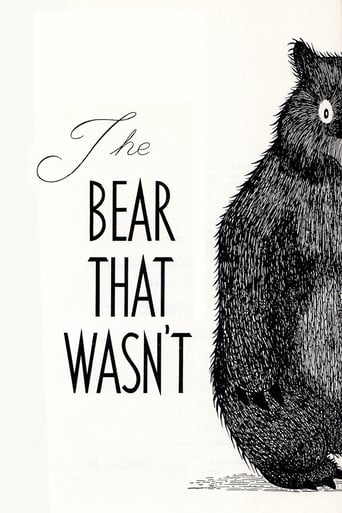Neil Doyle
Whatever kids are supposed to glean from this unconventional way of saying "be yourself," it's liable to be over their heads in delivering any sort of message. The appeal seems targeted for the '60 rebels who were activists on college campuses.Nice modern animation, some bright colors, an abstract look--and an ultra-silly storyline make this one of Chuck Jones' lesser cartoons of the era.Whatever satire existed in the original work has been made senseless by this cartoon. Viewed as the way nature has been disturbed by the invasion of man's industrial society, some adults may approve of it.Not my idea of a truly entertaining cartoon for all ages.
luttrelljd
I just saw this last night on BOOMERANG. I could have turned it off, but it was like watching a train wreck. I had to research it and found that it was based on a children's book written in 1946; the author was said to be very unhappy with this animated version. The argument is always "But its for kids, not for adults, right!" Yes! There are so may quality animations for kids out there, why waste time on junk like this! It is everything that was wrong with the late 60's - 70's animation. Stuff like this almost killed the animation art form. In fact it was the last feature to be produced by the MGM animation group. P.S. - The lowest rank this form allows is "1 star", I wanted to give it "0".
Lee Eisenberg
While Chuck Jones remains best known for his Warner Bros. animated shorts, he also directed a couple of interesting pieces after he left WB. Probably best known are "The Dot and the Line" and "How the Grinch Stole Christmas", but another one is "The Bear That Wasn't", an eerily prophetic look at the industrial age. Based on a short story by Frank Tashlin (also a former WB director), it portrays a bear hibernating, only to wake up and discover that there's a now a factory surrounding his cave. While the cartoon maintains a lighthearted tone, it does get fairly serious - if inadvertently - when the bear tries to explain his predicament. Representatives of each successive echelon tell him that he's just a man who needs a shave and wears a fur coat.At the very least, we see the invasion of the natural world by industry; one might interpret this cartoon as a precursor to "The Lorax". But inside the factory itself, not only do they force the bear to perform labor similar to what Charlie Chaplin did in "Modern Times", but there's the hierarchy displayed when we see the president in his throne-like chair. Not to mention the fact that they do everything possible to berate the bear out of knowing that he's a bear.But even beyond all this, the cartoon brings to mind the fact that these factories have since shut down and moved production to the Third World. Michael Moore's "Roger and Me" is a prime example of what resulted from such a situation. In other words, first the factories destroy their natural settings, then they abandon the areas and let them rot. This is what we have become as a society.All in all, I certainly recommend this cartoon.
didi-5
'The Bear That Wasn't' is a fine little cartoon, directed by Chuck Jones and written by Frank Tashlin, both seasoned animators who by the 1960s were at MGM having spent several years at Warner Bros. honing their craft on Bugs Bunny and the like.The phrase 'To thine own self be true' could have been coined for this film. The bear who hibernates and awakes in the midst of an industrial estate could be forgiven for wanting to blend in with the crowd, but to celebrate individuality, however illogical it may seem, is more important to him.The bear is a character we can empathise with, even given the difference in species ... and perhaps this fable proves that with progress, truth does not automatically follow.Well drawn and tightly written, it can be found as an extra on the 3rd volume of the Looney Tunes Golden Collection.
